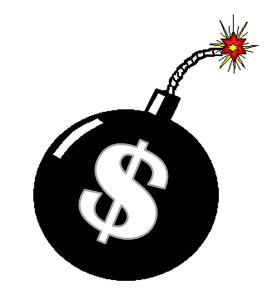One of the puzzles of the U.S. economy since the turn of the century has been declining economic growth rates, with the economy not having grown above 4 percent since 2000 and not above 3 percent since 2005.
To get a good year of robust economic growth, it helps a lot to have a strong first quarter. Unfortunately, 2018 is not shaping up to be one of those years, after only growing at an inflation-adjusted 2.3 percent annualized in the first quarter.
Now, to get to even 3 percent for the year will require a big bounce back in the second quarter, at about 3.8 percent annualized, where we assume 3 percent growth in each of the remaining quarters for the year.
Each quarter that goes by failing to get back on pace, the much more difficult it becomes to reach 3 percent for the year.
But it’s absolutely doable. There are still further estimates to be made, so it is possible the first quarter could be revised upward.
Also, the second quarter will be the first quarter when the Trump tax cuts have fully been realized as the withholding tables were changed in February so perhaps there will be a bump there.
However, it should be recalled that in 1981, the first year of the Reagan tax cut, was not signed into law until Aug. 1981. The economy grew just 2.6 percent that year.
A year later, in 1982, was the second worst recession in modern history when the economy shrank 1.9 percent. Interest rates were brought to such high levels it stifled investment. Unemployment spiked.
But once the waters had receded, the economy boomed. 4.6 percent in 1983. 7.3 percent in 1984, one of the highest growth rates in the postwar era.
So, sometimes, it can take a while for the economic stimulus of a tax cut to take root. Right now, it’s good for household budgets having the extra money in the bank and don’t forget that corporate taxes were cut, too, and hundreds of billions of dollars are being repatriated. But it might not create an immediate stimulus. It could, but it might not.
There are of course other factors. The long-term slowing growth has coincided with the globalization of the economy, with production being outsourced. China was granted most favored nation trading status in 2000 and entered the World Trade Organization in 2001. Since then, economic growth worldwide and investment has shifted to emerging markets.
Although President Trump has begun getting tough on trade with his recent rounds of steel and aluminum tariffs, the shifting of global supply chains overseas did not happen overnight and production won’t shift back into the U.S. immediately either.
Another factor to consider is the slowing growth of the working age population, which weighs heavily on the potential growth of the economy. The theory here is that the fewer new people who are participating in the economy, the less new money will be spent in the economy, therefore driving growth down.
But in that case, the slower economic growth we see today might just be a benign indicator, unless there are reasons you really need robust growth.
Here the $21 trillion national debt comes to mind. Without that, you might care a lot less about how fast the economy grows. With it, you have to worry that once again the growth of the national debt is far outpacing the growth of the economy.
Consider, right now, the debt to GDP ratio sits at 105 percent. Since 2000 the debt has grown by about 7.4 percent a year, but nominally, that is, before adjusting for inflation, the economy has only grown at about 3.96 percent annually.
At those rates, in 20 years, the national debt will be $89.1 trillion, but the GDP only $42.7 trillion, a whopping debt to GDP ratio of 208 percent.
Therefore, more robust economic growth should be a national goal. Because the alternative is the debt will very soon be so large we can never hope to pay it back.
More immediately, though, there are reasons to be optimistic. Even if the economy slows down in the interim, with the pent-up demand taking root via the tax and deregulation stimulus taking root, we might see a bigger number, sooner or later. Hopefully it’s sooner. Stay tuned.
Robert Romano is the Vice President of Public Policy at Americans for Limited Government.








